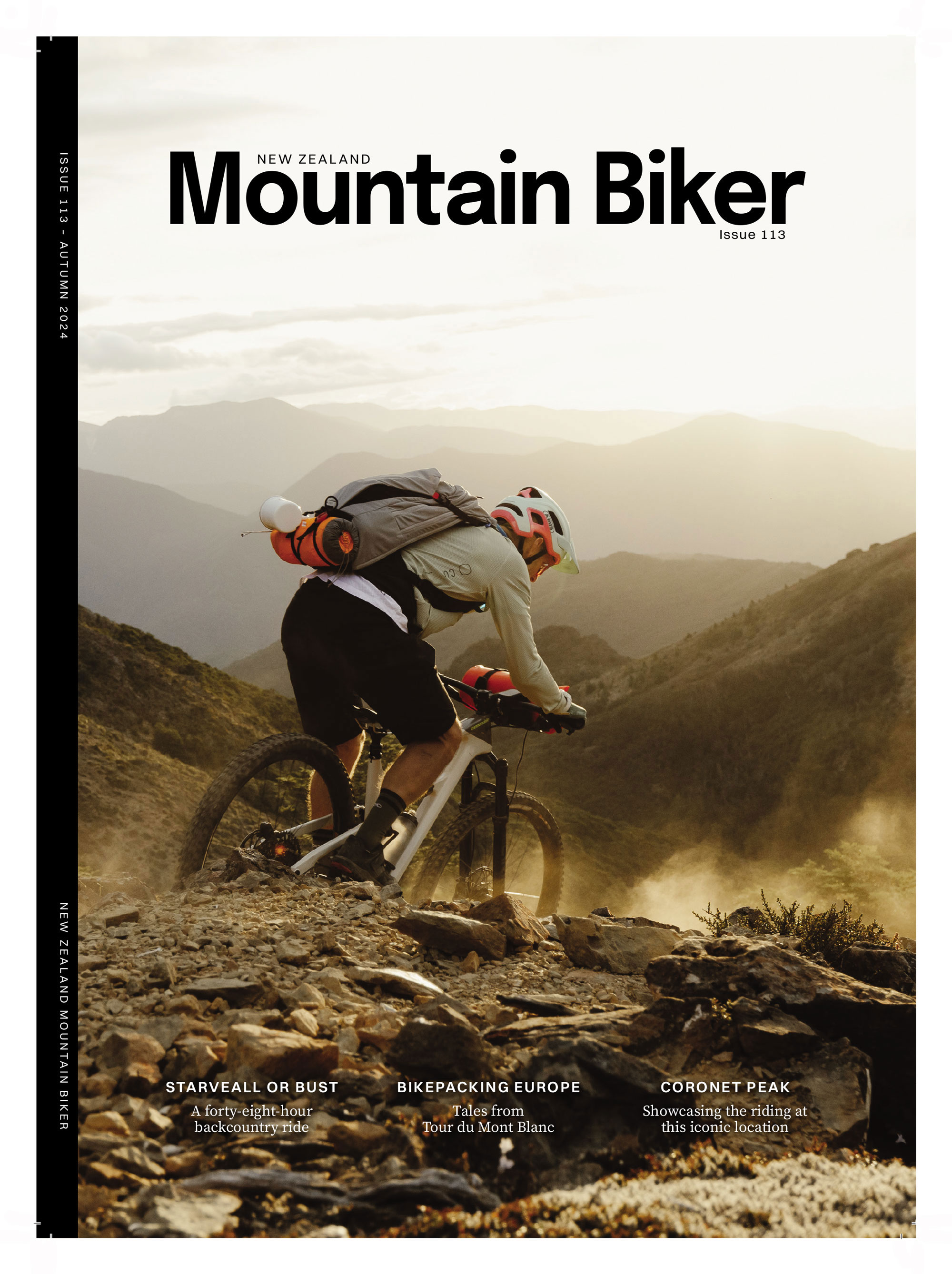Words Lester Perry
Illustration Gary Sullivan
Consider this: you’re a new rider rolling up to a trailhead, you’ve borrowed a bike from a mate who didn’t need it today, and it’s your first time riding by yourself. Unloading the bike, you’re excited; it’s a size too big but you wouldn’t know otherwise. Your mate who you’d normally ride with isn’t with you today, so you’re more focused on what’s happening around you. Dressed in the clothes you wear daily, you mount your steed. Heading toward the trail from the car, you’re looking at what other people are riding, what they’re wearing, and the lingo they’re using. You see things you don’t usually notice when you’re riding with your mate. “Cripes, those bikes are worth more than my mate’s bike, his car – and mine – combined!” “Those guys in all that fancy riding kit look pretty serious, must be what you need to wear for this riding stuff…”\
If you’re reading this, you’re probably not the person above. It’s likely, like me, you’re one of those other people our person rolled past on their way to the trailhead. It gets me thinking – are we losing people from our sport because they feel out of place or because it’s not an accessible or inclusive sport? I sure think so.
The person mentioned above is probably going to feel out of place – in fact, maybe they’ll have the same feeling I get after walking into a high-fashion store. “There’s nothing here for me; I don’t identify with anything or see anyone like me.” Maybe we’ll see these people at the trails a few times, but maybe they’ll switch off, and riding will become a “now and then” hobby as opposed to an exciting and enriching part of their lives – like it is for us.
Mountain biking has become an upper-middle- class sport at best. In particular regions, I’d almost go as far as to say that, from the outside, it looks like an elitist sport. That’s a huge generalisation and there are people working hard to break this mould but, for now, that’s how I think it looks from the outside.
We need a shift in thinking. Too often these days, trailside chat is about the latest wizz-bang gadget, recent component or gear purchase – or the cost of said part -, rather than about what a good time we’re having out on the trails. It’s worth pondering; are the upgrades and purchases we make really necessary upgrades, or just vanity purchases?
There’s an undercurrent that the bike we’re on must be as close to the top of the range as possible - and heaven forbid we ride it in its stock form straight from the shop floor!
Unfortunately, it seems mountain biking has become a fashion sport, with purchasing decisions nowadays driven by fashion and the need to have the latest thing, rather than an actual necessity. There’s an undercurrent that the bike we’re on must be as close to the top of the range as possible – and heaven forbid we ride it in its stock form straight from the shop floor! Honestly, how many people are out-riding a mid-level fork and need the top model? Those OEM tyres?They’re probably not that bad, so why not wear them out before you change them? You might even be surprised at how good they really are, regardless of what you’re told.
Sure, if something’s worn out or broken, it needs replacing – but I reckon we need to normalise buying secondhand, or at least considering it, for no other reason than minimising our impact on the planet and, in a small way, we may avoid excluding people. If a bike has been properly looked after, it should last years – and to be fair, the minuscule upgrades we see from season to season are almost unnoticeable. They’re 1% changes barely worth dropping bank on. Will you really feel the difference or is it just that shiny decal you want to show your mates on Instagram?
When it comes to buying a brand-new bike, the same logic applies. I’ve seen riders (myself included in the past) ticking up high-end rigs on high-interest schemes, all to keep up with the Joneses, leaving them financially overreaching and ultimately over-capitalising on their bike. Let’s normalise buying a cheaper bike – it doesn’t necessarily need to be of lesser quality, but perhaps not a premium top-level rig. I’ve been surprised by the performance of some mid- level groupsets and suspension. Are those shiny decals and a 300-gram saving in weight really worth a few extra grand? Doubt it. I’d encourage buying a value-conscious bike that’s more realistically suited to the level it will be used. Don’t skimp out too much, but deal with that extra weight and spend the money saved on a skills clinic and a riding trip. Both of these will boost your riding level and give longer-lasting enjoyment than that 300-gram saving ever will.



